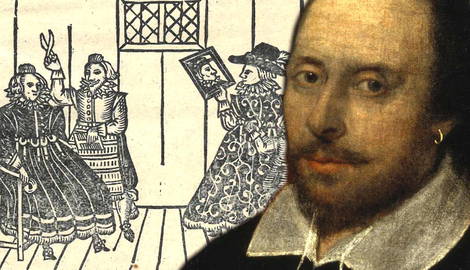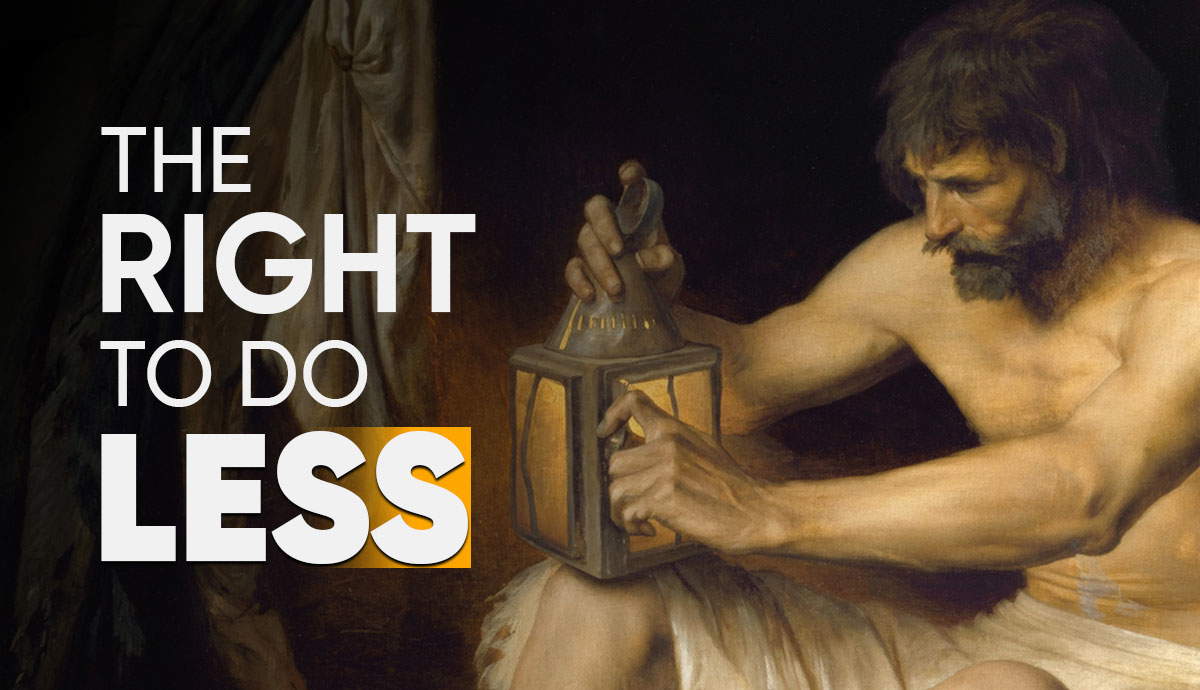
A man goes to bed with a beautiful woman, only for her to lift up her skirt to reveal that she is a boy. Elsewhere, a woman must do penance for dressing up in men’s clothing and beating up other men. In Oxfordshire, a man must go to court for disguising himself as a maid to sneak into a birthing room. All of these incidents occurred around Shakespeare and his contemporaries, scandalizing the people of London. Some adored these strange figures as much as others detested them, writing stories about them or even going to bed with them.
Why Did the Puritans Hate Theater? Gender and the Theater

Most people remember the English Puritans as “the people who banned theater” or “the people who hated fun.” The reasons why the Puritans hated theater are seldom remembered, or poorly understood. But the Puritans did not hate theater because they hated fun—they hated theater, among other reasons, because Lady Macbeth was played by a boy in a dress. In fact, Shakespeare’s audiences found the boy in a dress rather attractive.
We learn it in school. Yet, to this day, actors and audiences alike still struggle to believe it. Dame Judi Dench has refused that a role as complex and demanding as Cleopatra or Lady Macbeth could be played by a boy. Yet before the Restoration, England’s stages were composed of exclusively all-male troops. What is meant by “boy” does not have an exact fixed age range—generally, boys and young men would play women at least until it stopped being convincing.
Historians are still divided as to exactly why England continued to cast boys in women’s roles, but England was the only place in Europe to do so. In continental Europe, women’s roles were only played by women. Even in the so-called pageants written for the courts of James I, noblewomen of the court would play the women’s roles. The English stage was a complete anomaly.
The Lust for Shakespeare’s Beautiful Boys

The theater was a sexy place. When women were finally allowed to play women on the English stage, playwrights would write them into cross-dressed parts so they could see them wear breeches. The reason for this, quite simply, was so that the men in the audience could gawk at a woman’s legs. The problem was that—even before women were first allowed on the English stage—the theater was still a “sexy place.” Only it was not the adult female actresses the audience desired, but rather the boy actors.
The common complaint of so-called anti-theatricalist writing was twofold. The first was that people would imitate what they saw on stage. If they saw boys dressing up as women, then what was stopping them from going home themselves and dressing up as women? The second was that people found the boys dressed up in women’s clothing irrepressibly attractive.
Writers like Stephen Gosson and William Prynne wrote constantly about the “sparks of lust” that would be inflamed by the beautiful boys up on the stage. Indeed, many of Renaissance England’s theater-goers did as well. As Samuel Pepys’ records on 18th August 1660 in his famous diary:
“I have had time to see since coming from the sea, ‘The Loyal Subject,’ where one Kinaston, a boy, acted the Duke’s sister but made the loveliest lady I saw in my life, only her voice not very good.”
Pepys is here discussing Edward Kynaston, the renowned boy actor who would later go on to play male roles. Kynaston was nothing short of a diva, and even delayed a performance because he was not shaved. Many boy-actors in a company would start by playing female roles, and age into male roles when they no longer “passed” for the female ones. For Kynaston, this was when he hit twenty-one.
The Boys Who Dressed Up as Beautiful Women

It is still up for debate whether antitheatricalist concerns create an accurate image of Shakespeare’s London, or are exaggerated polemics that distort such an image. However, these texts give us key insights into fleeting pieces of history that are otherwise overlooked. They offer us glimpses into the lives of difficult and queer figures, which scholars still do not know what to make of today.
In his pamphlet Plays Confuted (1582), the antitheatricalist writer Stephen Gosson argues fiercely against boys playing women on stage. He compares dressing up as a woman to the binding up of a snake, who “traps” and kills their victim. He writes that:
“Some there are that think this commandment of God [against dressing in the clothing of the opposite sex] to be restrained to them, that go abroad in women’s attire and use it for juggling [deception].”

What is most interesting in this quote is the part that Gosson practically skips. There are some men, according to Gosson, that go outdoors in women’s clothing to seduce and deceive others. In fact, there has already been an entire debate about which forms of cross-dressing are morally acceptable (boys on stage), and which are not (men on the street).
It would not be far-fetched to think that many people went out in the streets of Shakespeare’s London in clothes of the opposite sex. The English playwright Thomas Middleton (1580-1627), who was Shakespeare’s contemporary, wrote his first poem Microcynicon (1597) on such a subject. In the poem, a man notices a beautiful young woman passing him by on the street. Hoping she might be a sex worker, he gives her a coin. She consents to go to bed with him—until she lifts up her skirt to reveal, to his horror, that she is actually a boy. The poem scandalized Middleton’s contemporaries to the point that it was publicly burned some two months after its publication. It never went back into print.
The Man Who Snuck Into a Birthing in Seventeenth-Century Oxfordshire

Between these brief glimpses of beautiful boys dressing up as women to “trick” men, there are a few occasional figures who turn up in legal records. One of these is the case of a particular Thomas Salmon, who in December 1633 stood trial in Oxfordshire for having intruded on a childbirth disguised as a woman.
Childbirth was typically a gender-segregated event. Standing beside the mother-to-be would be family members and midwives—all women. The court transcripts do not give a clear answer as to why Thomas Salmon decided to sneak into such an event but he confesses that he barely stayed at all. He left rather quickly, and instead walked around in women’s clothing for around two hours.
How did Salmon get these clothes? He had been given them by one Elizabeth Fletcher, the young adult daughter-in-law of the midwife. Salmon was her father’s servant. After Fletcher told Salmon that she was going to attend a birthing, it was Salmon who insisted that she would dress him in women’s clothing so that he could come along as well. She told the courts that she was merely “intending merriment thereby” and did not mean to cause any trouble—whose merriment she was referring to, however, is unclear. Whether this was a cheap laugh for herself and the other women, or an act of charity towards Salmon, is uncertain.
It was the midwife who noticed something was wrong. Salmon had come in with Fletcher on the pretense of being somebody’s maid, which the other women readily accepted. Yet it was the midwife who noticed that her daughter-in-law’s clothes were on a complete stranger. Thomas Salmon was removed from the event, but proceeded to stay in women’s clothing.
Remarkably, nobody was punished. Yet the record leaves much to the imagination. Why did Thomas Salmon ask to be dressed as a woman? Why did he continue to stay in women’s clothing, even after he was discovered? Why did Elizabeth Fletcher so readily help him—and how did early modern people feel about this sort of cross-dressing?
Moll Cutpurse: The Woman Who Terrorized the Streets of Jacobean London

Women, too, became infamous on London’s streets for wearing the clothes of the opposite sex. The most notorious of these figures was one Mary Frith—or Moll Cutpurse—who terrorized the streets of Jacobean London.
Mary Frith was born to a family of urban artisans, the daughter of a shoemaker in the Barbican. Where most women would be expected to be married off, Mary Frith took to the streets. Always donned in men’s clothing, Frith was a mortifying encounter to people on the streets of London—swearing, smoking, and even stealing.
Mary Frith was no obscure figure. Once, she even hired a trumpeter to hail her riding a horse across London in just breeches and a doublet—purely to shock. She fascinated and horrified the foremost writers and thinkers of seventeenth-century London. After his poem was burned, Thomas Middleton collaborated with Thomas Dekker (1572-1632) to write a fictionalized account of Frith’s life, called The Roaring Girl (1611). “Roaring boys” were the rambunctious and violent young men who terrorized the streets of London. Frith was their match. Even the poet Milton, it is reported, wrote her epitaph.
A History of Gender Identity, or Something Else?

We do not know exactly how many people like Thomas Salmon or Mary Frith scandalized the streets of early modern London. Londoners were so mortified, however, that they took to writing polemics. Pamphleteers distributed anonymous polemics, such as one titled Hic Mulier (or the Man-Woman) and another titled Haec Vir (the Womanish-Man). These were scathingly satirical condemnations of those figures who haunted the streets of London in the clothing of the opposite sex.
What exactly we should make of these figures is still uncertain. What would they tell us about themselves, if they could speak to us? It would be tempting to call these figures transgender. It would also be wrong. The language we use today to navigate our identities is incredibly new—and what we understand today as “transgender” has only come into existence in the last century. There are many queer figures lurking in the historical record, if you look hard enough. We do not know how they would have described, or even understood, themselves. It is comforting, however, to know that the past was a much more multifaceted place than we think.










